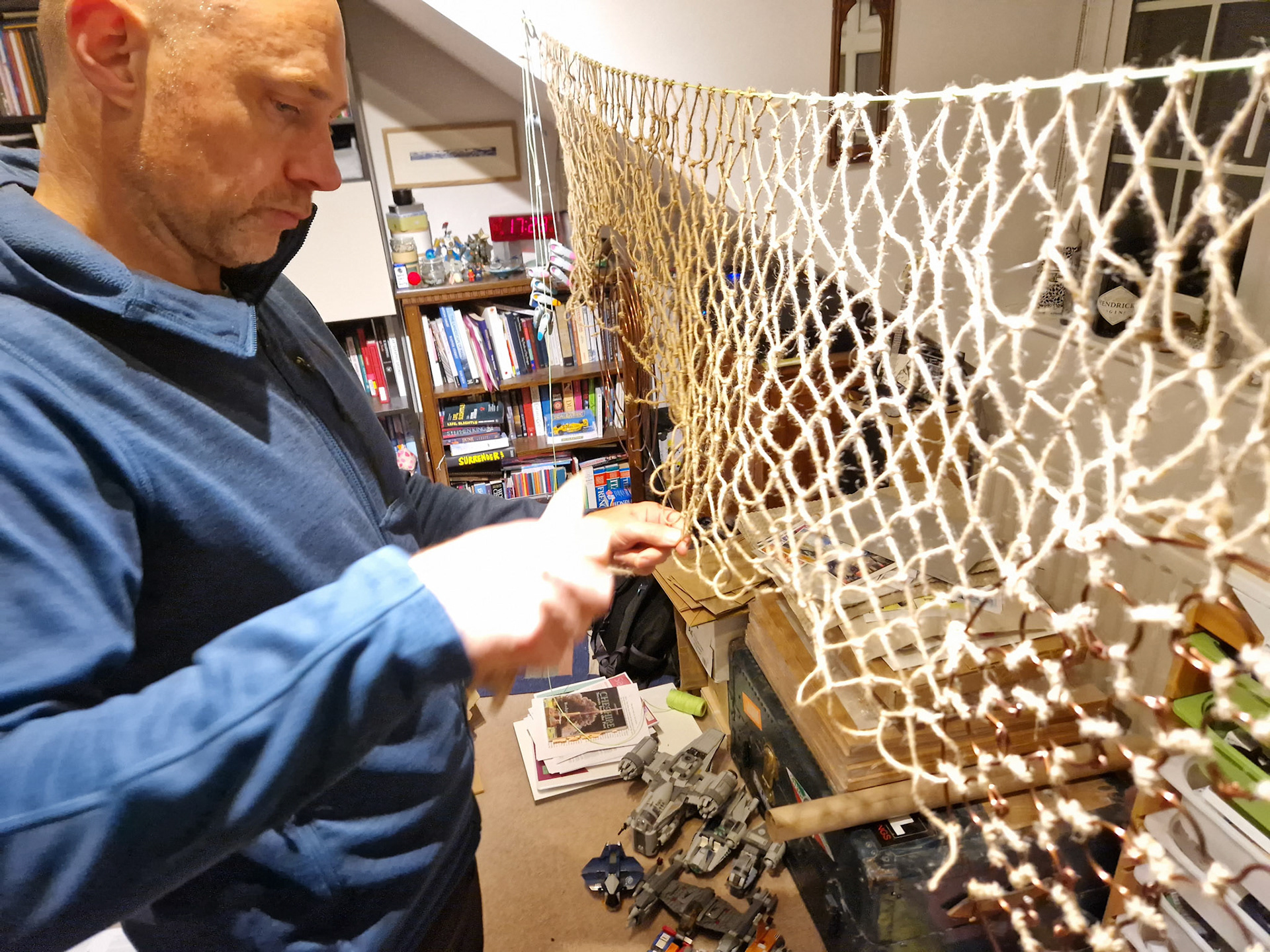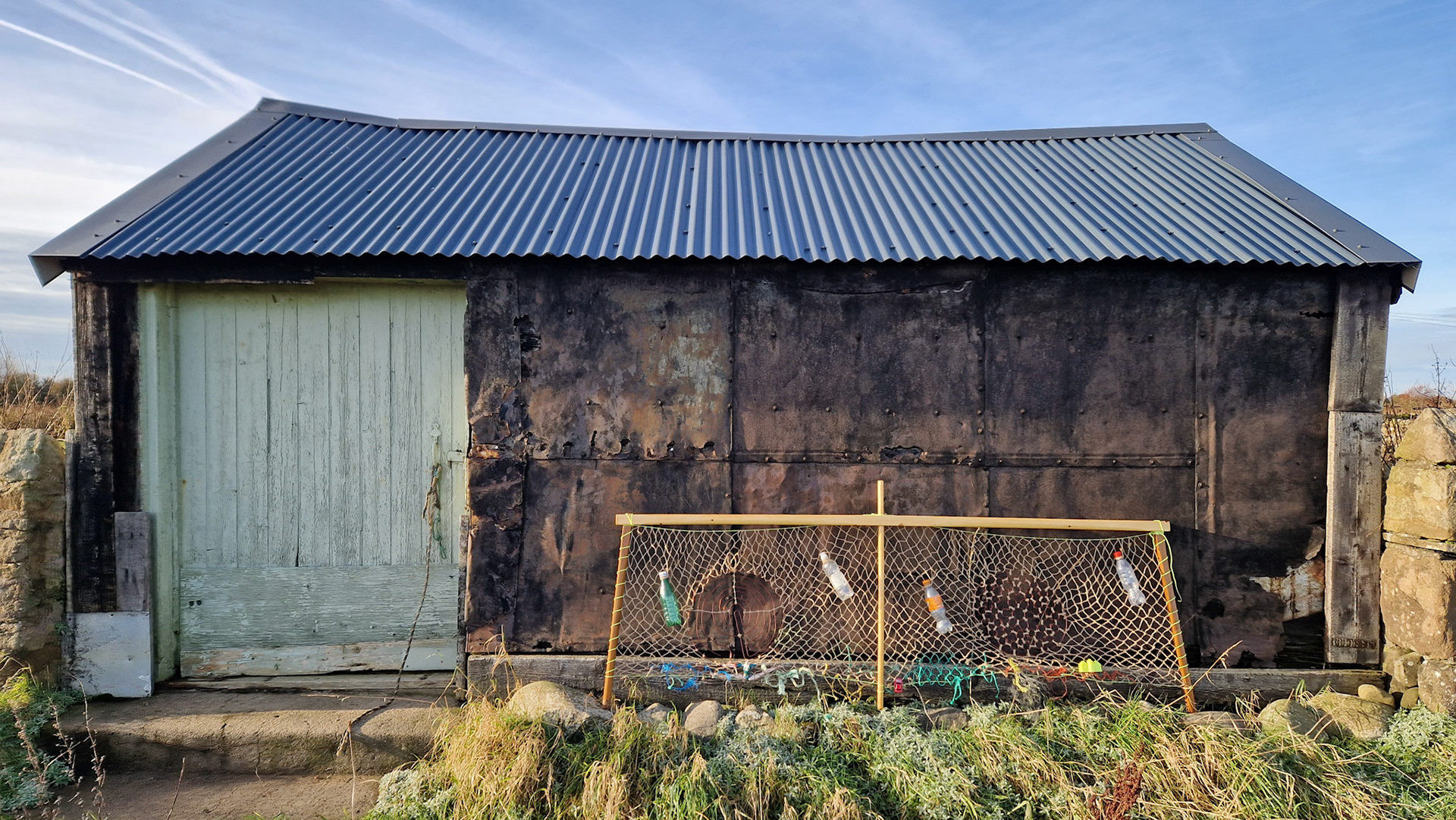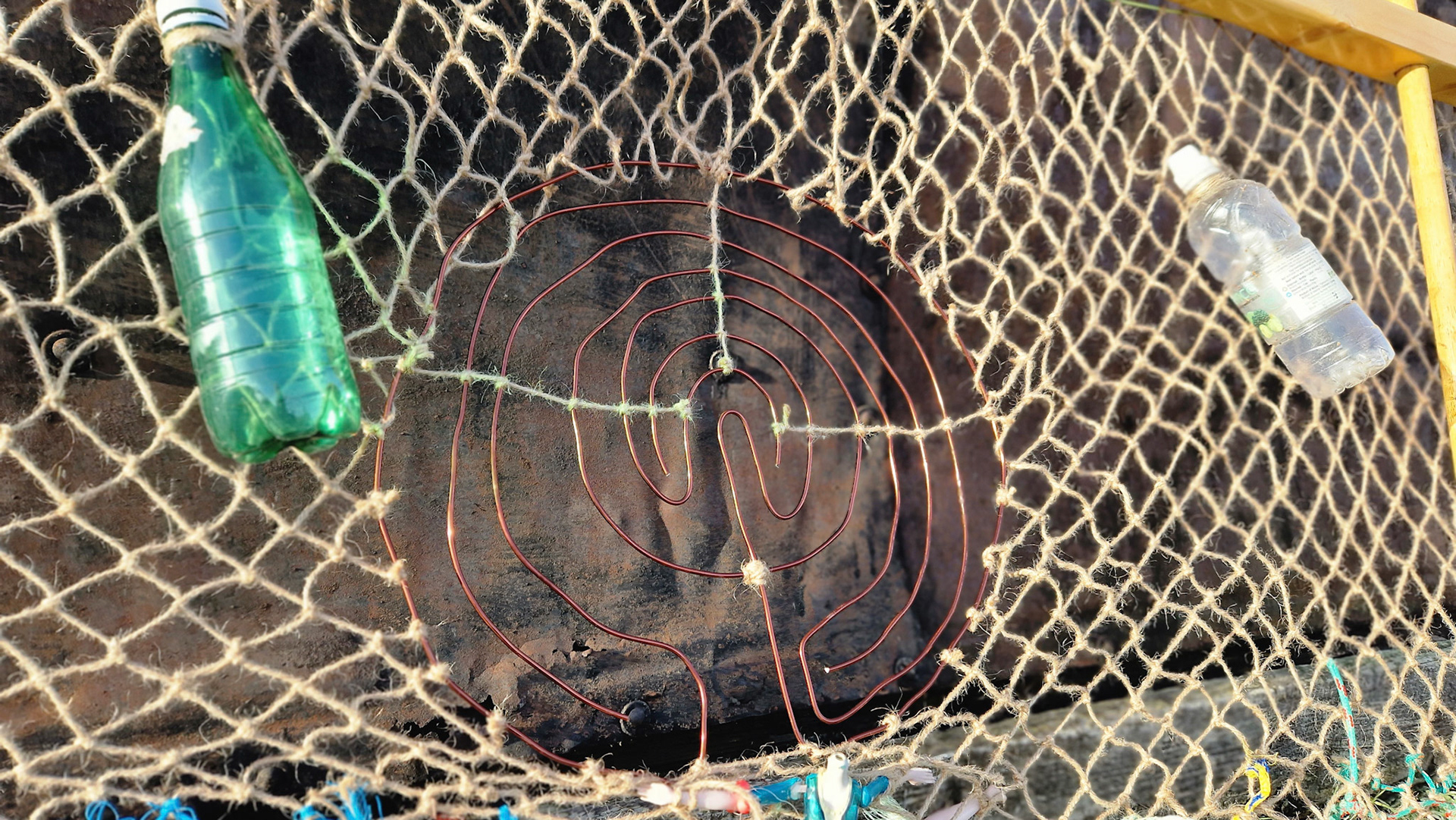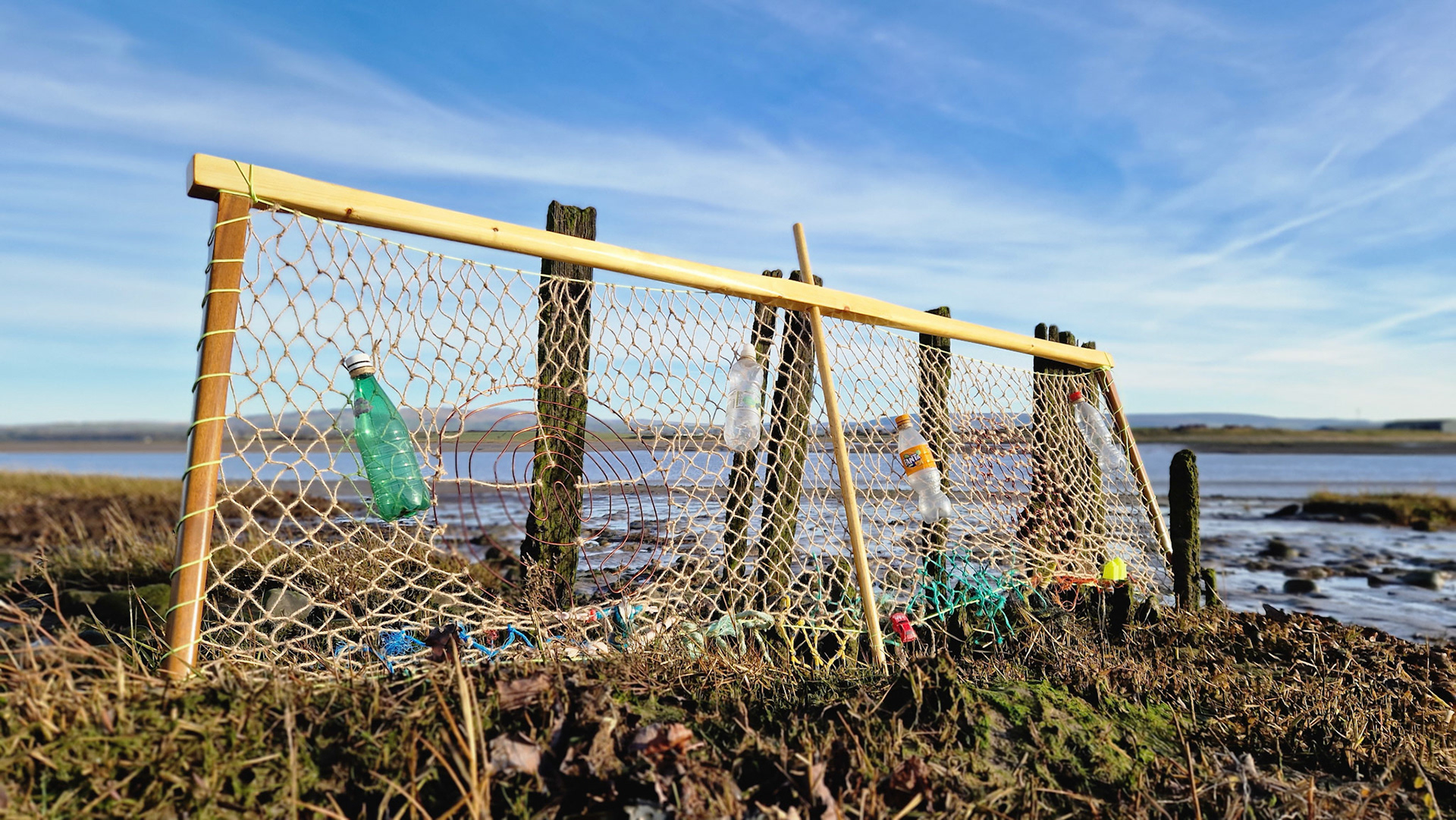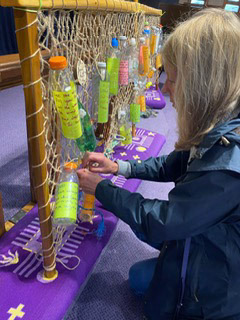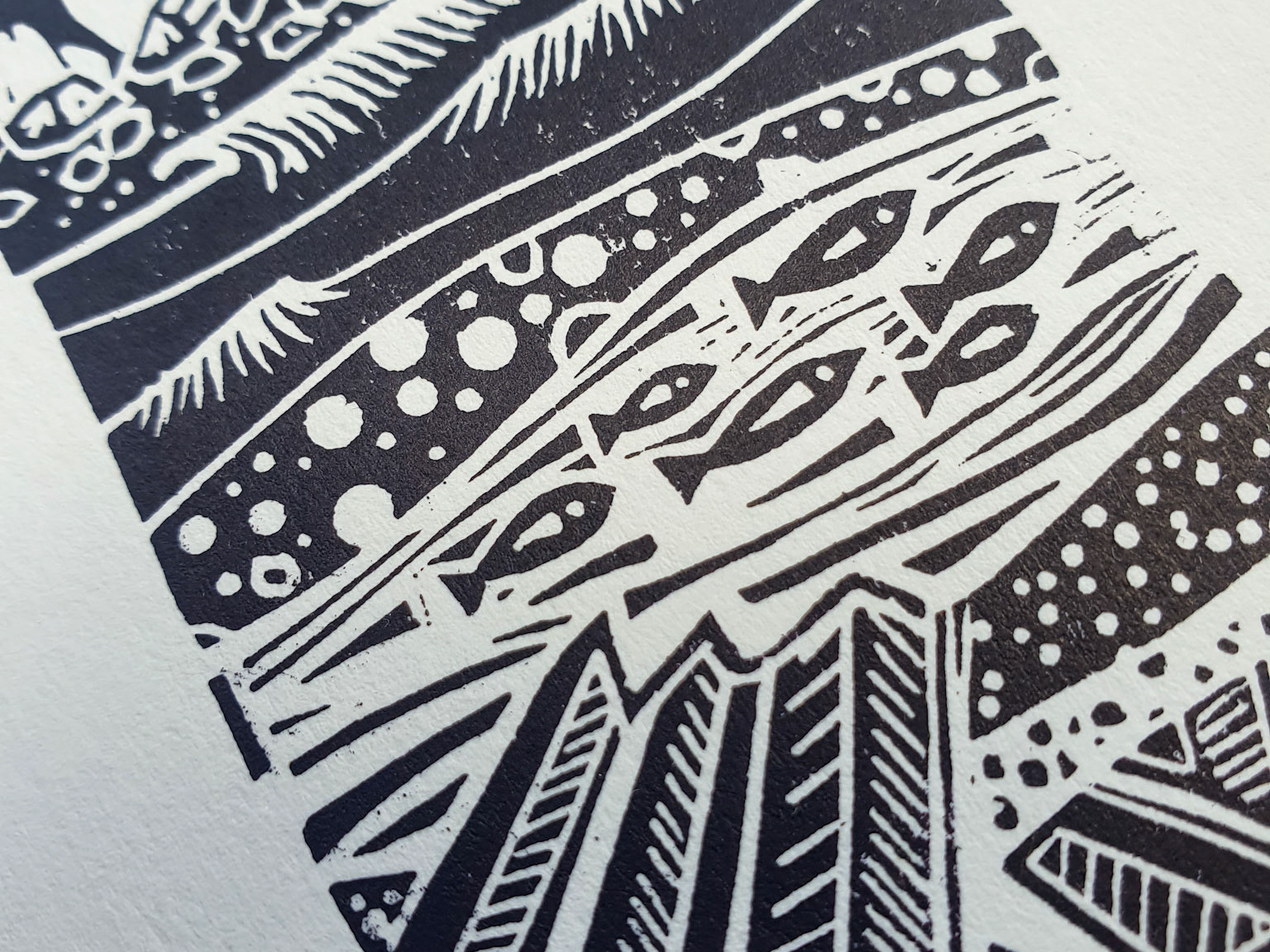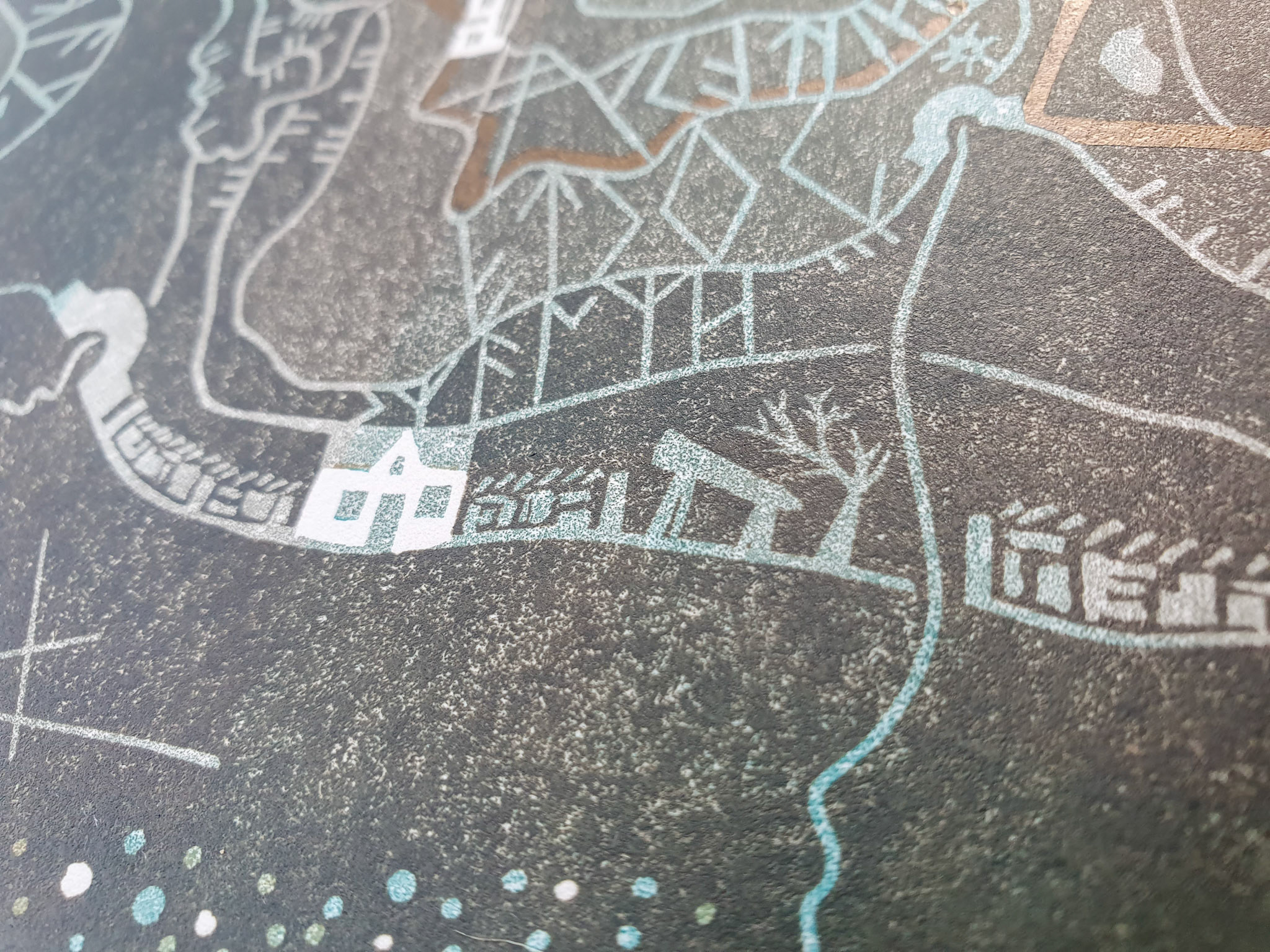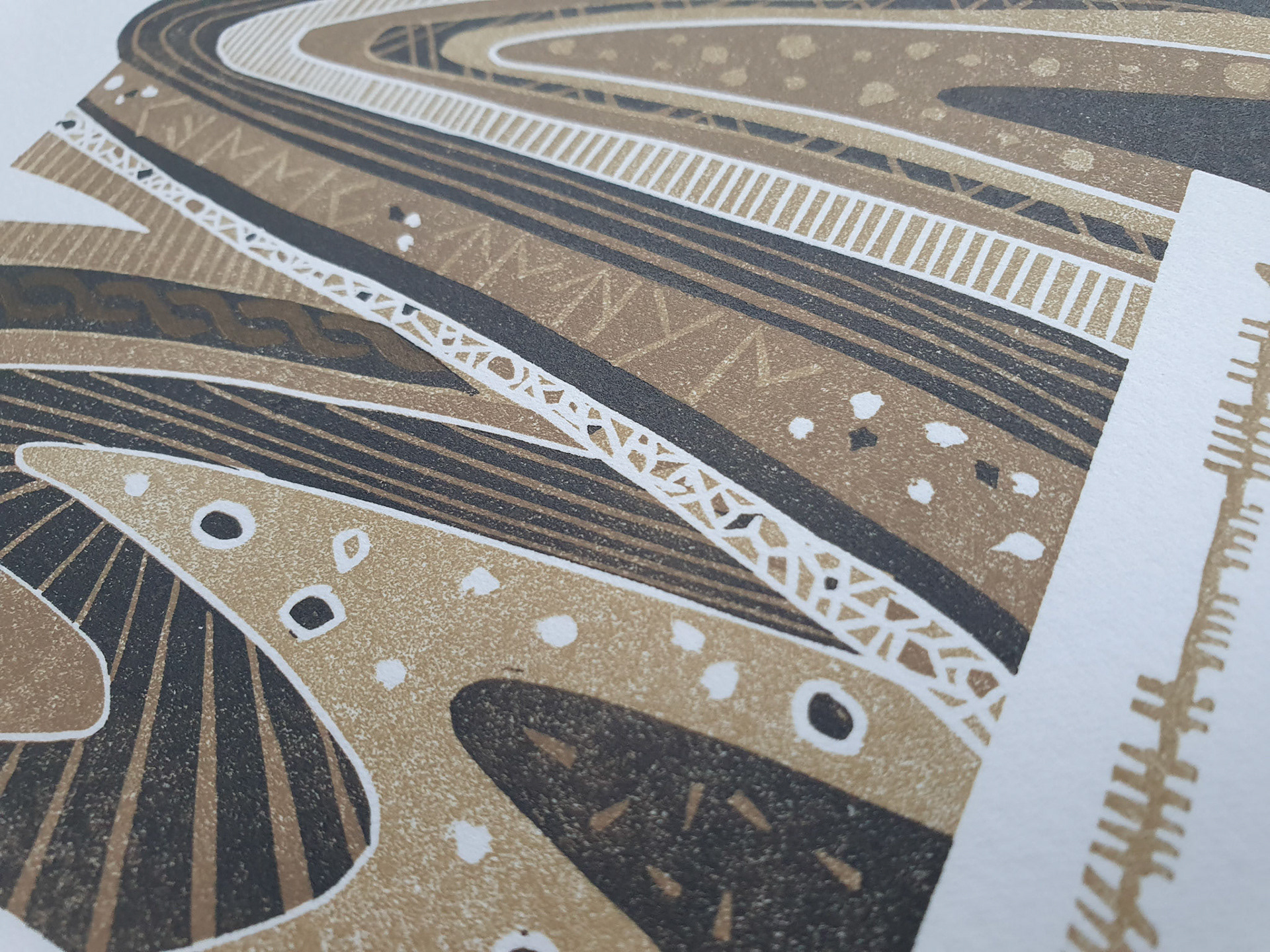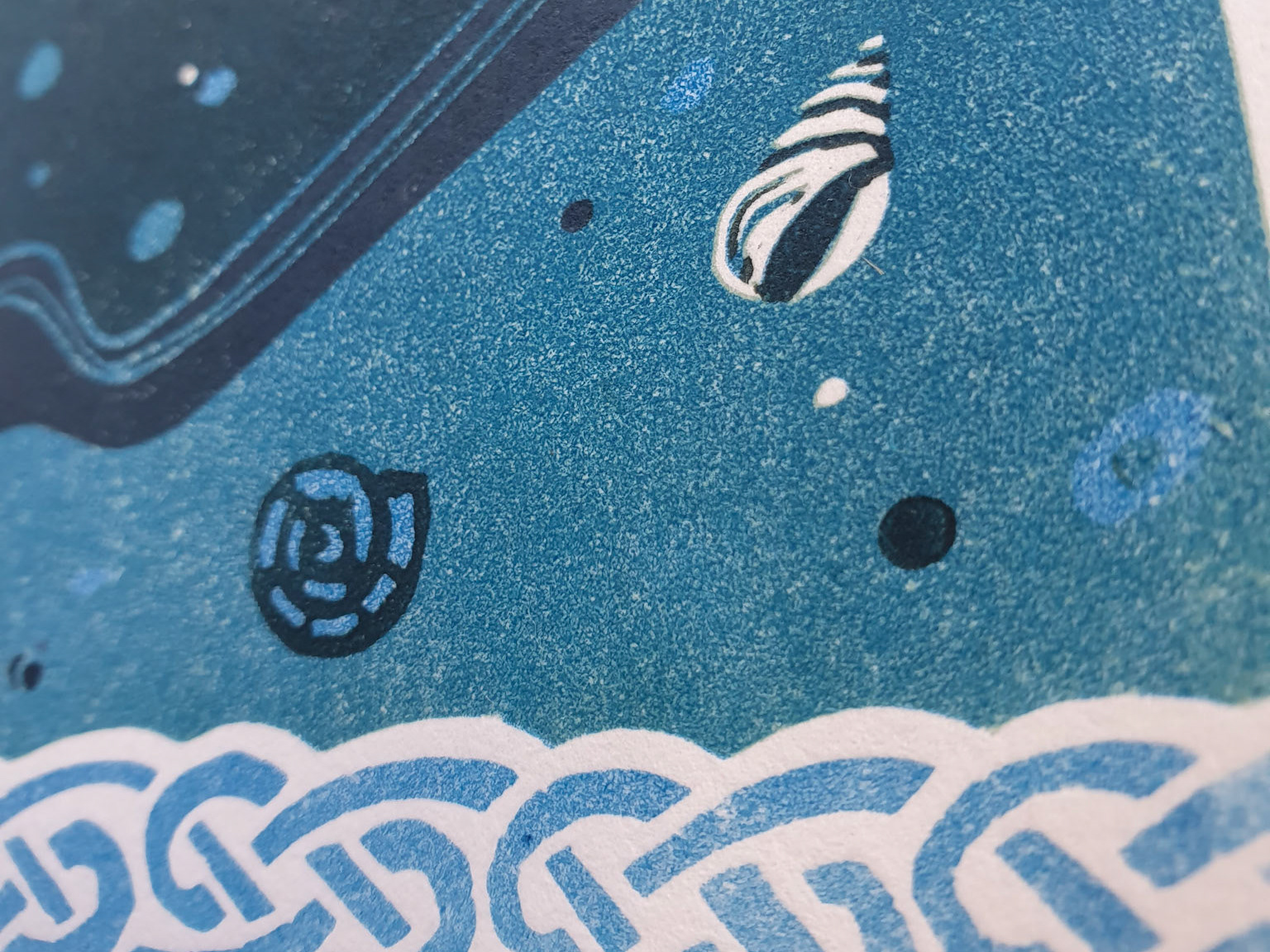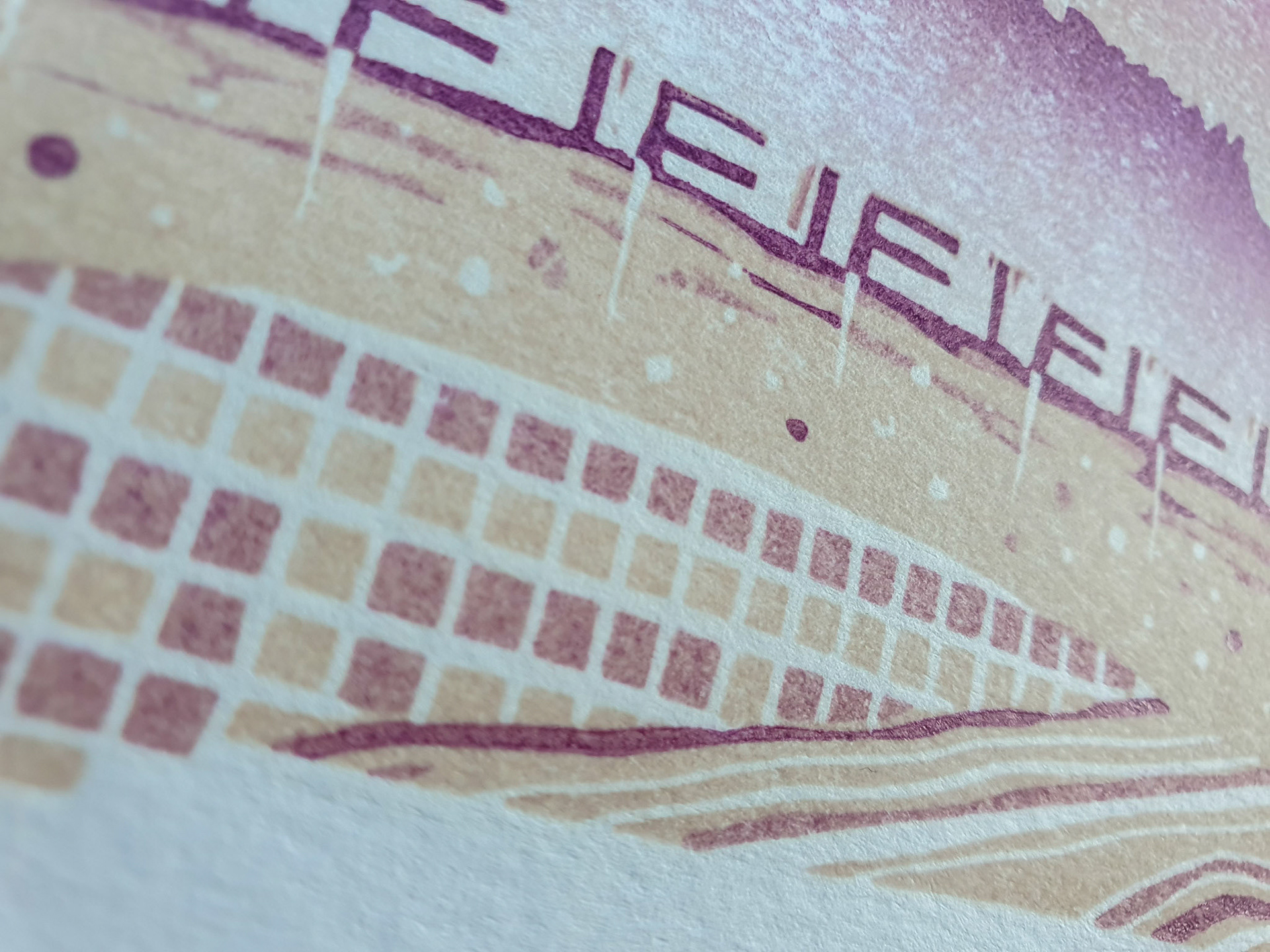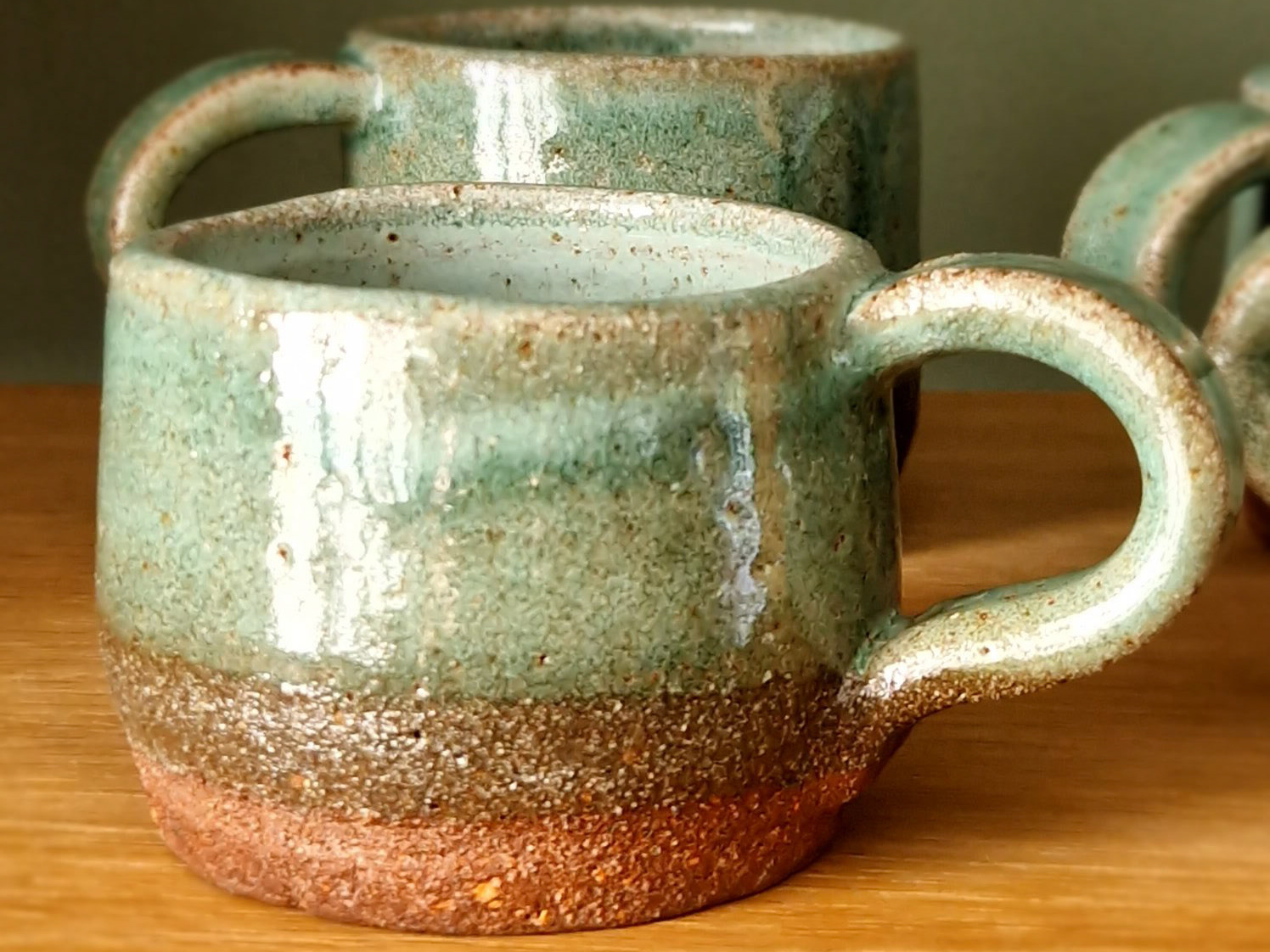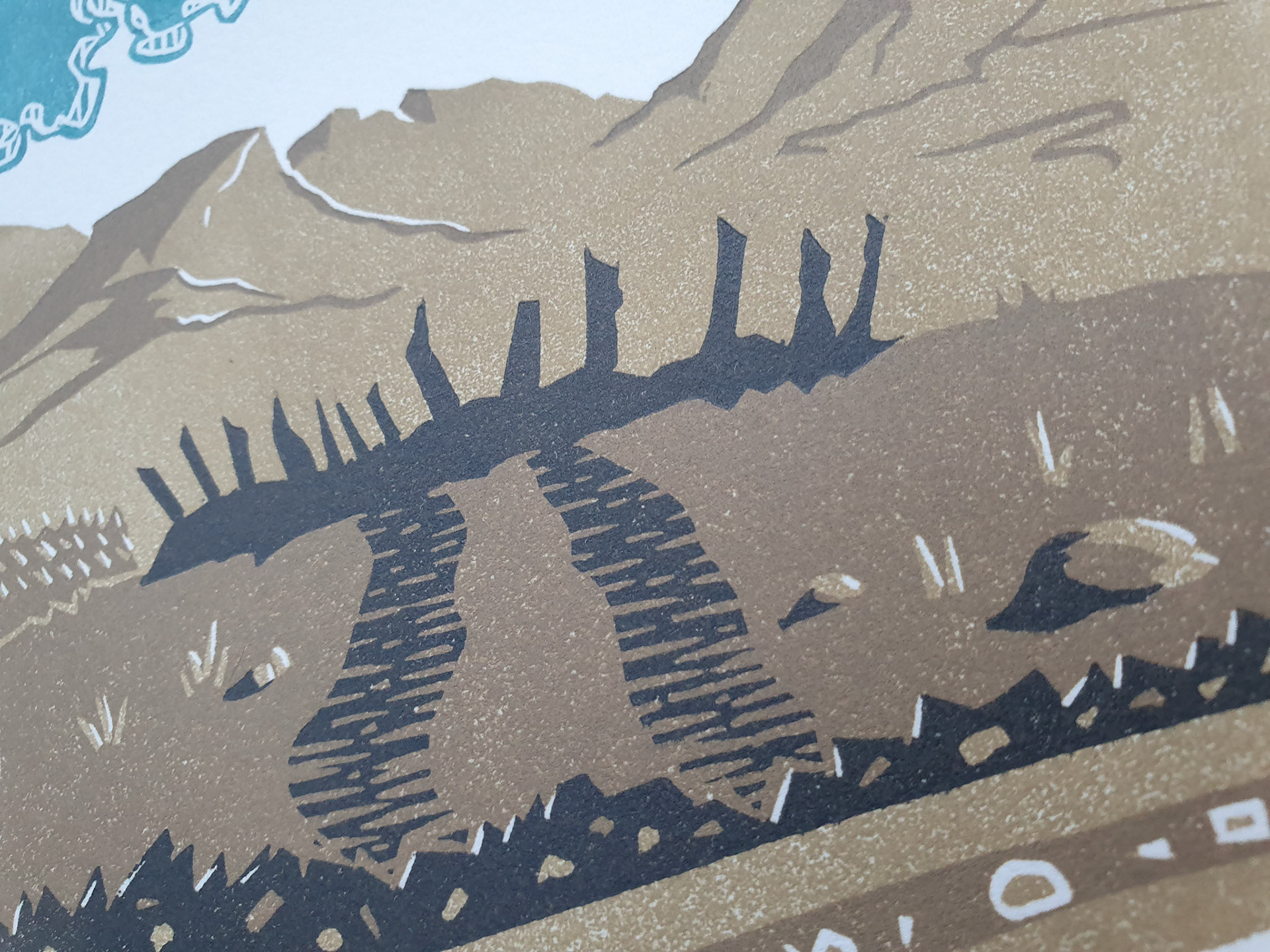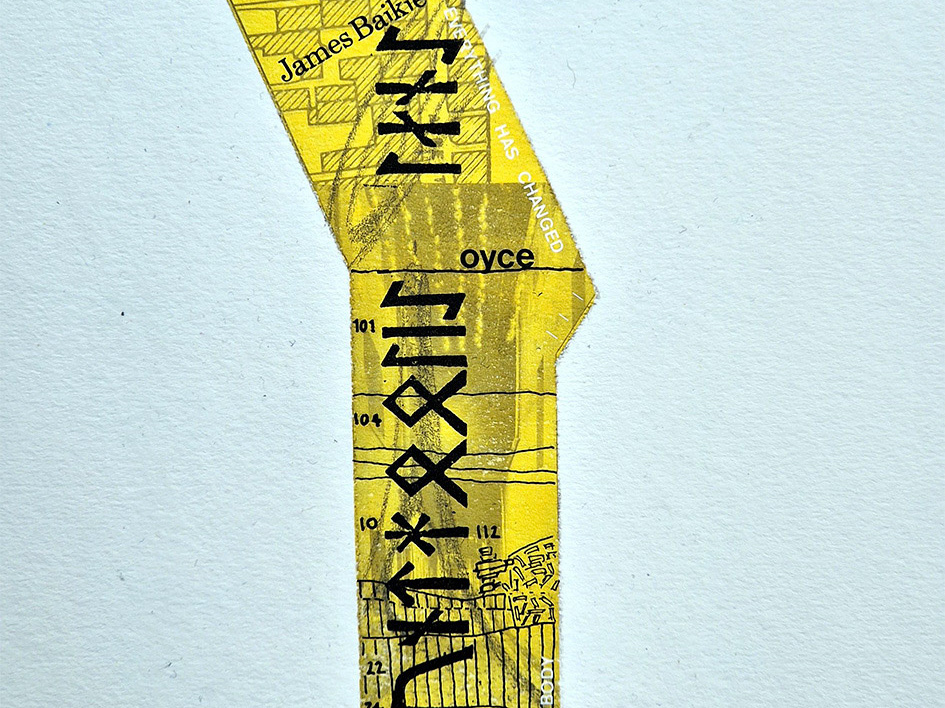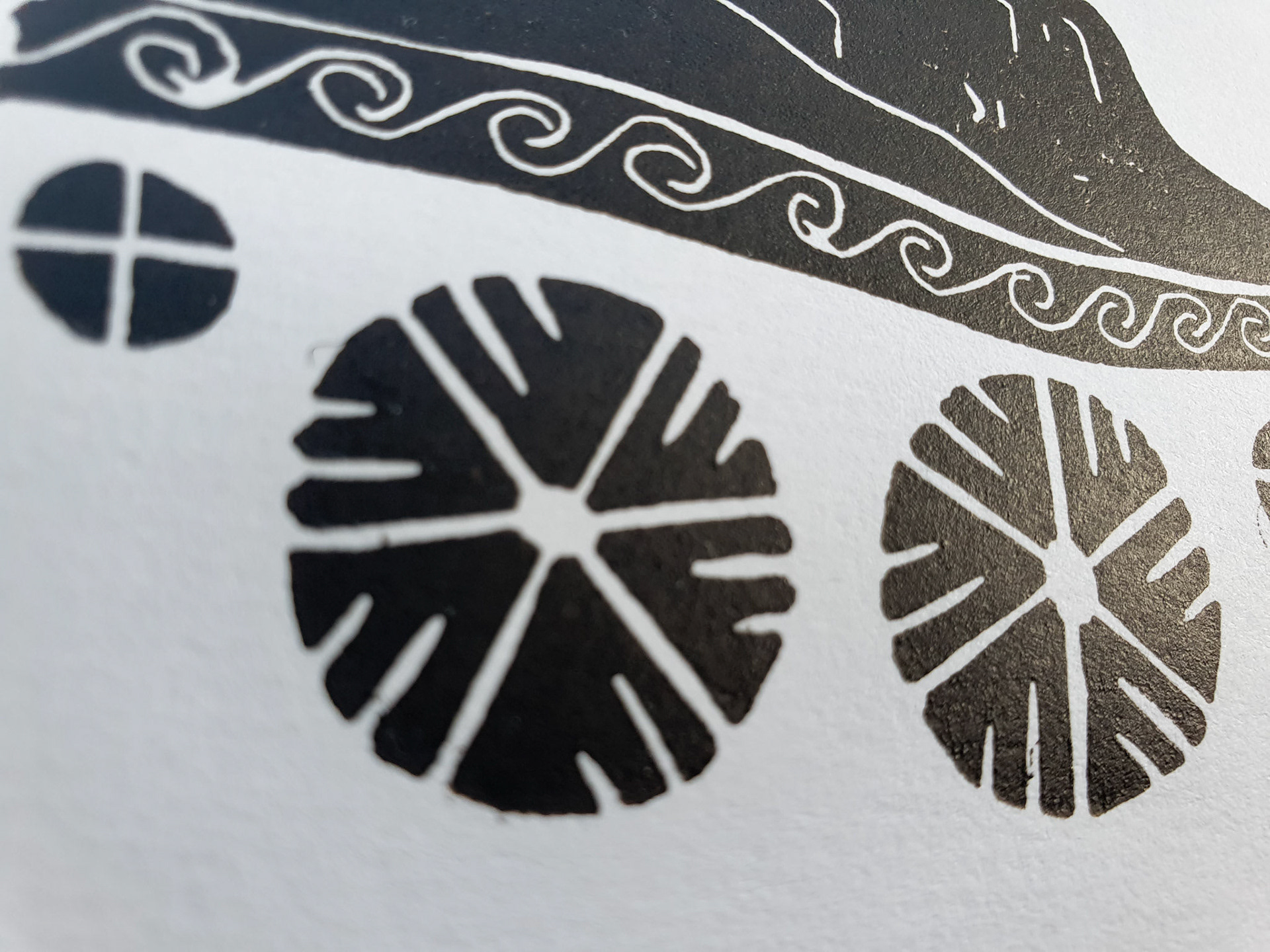The Haaf Net of Hope is the outcome of initial research into aspects of coastal life in northwest England as we consider human impacts on our environment, and the potential futures that they may bring.
Based on an ancient form of salmon fishing introduced by the Vikings, a half-scale beam was constructed using traditional techniques and materials – mortise and tenon-jointed red pine and greenheart wood, and a net woven from hemp cord – into which materials from beach cleaning in the Heysham area have been incorporated to acknowledge the current issue of plastic pollution – one of the more visible human impacts.
Haaf netting is an ancient practice in which those fishing are deeply connected to nature, and I wanted to use it, and the symbology of the net itself, as a metaphor for our connectedness to each other and to our environment. Into the net, I wove patterns in wire – one of the unicursal labyrinth found on Heysham’s foreshore and the other a replication of the pattern within Heysham power station’s reactor core, as representations of the area’s past and future. Labyrinths represent rebirth and protection, in fitting with our need to modify our behaviours to safeguard the future of our coastal areas.
Participants in a workshop in Heysham Village were invited to write a ‘message in a bottle’ to be attached to the net. These messages of the area include memories of times past, of people haaf netting in the Lune, and of hopes for the future of Heysham and for the environment. At the workshop, I was honoured to meet Margaret Owen, the only remaining female licensed haaf net fisher on the River Lune, who so generously gave her time to help promote the project and share her memories of haaf netting. My thanks go to Karen and Phil Lee of Heysham Neighbourhood Community, whose tireless work made the workshop possible and gave the Haaf Net of Hope a permanent home in the community garden in Heysham Village.

